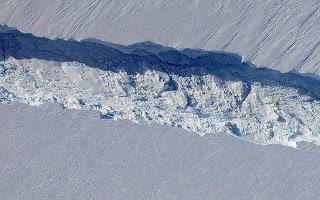NASA's airborne expedition over Antarctica this October and November has measured the change in glaciers vital to sea level rise projections and mapped others rarely traversed by humans.Operation IceBridge, nearing completion of its third year, is the largest airborne campaign ever flown over the world's polar regions. Bridging a gap between two ice elevation mapping satellites, and breaking new scientific ground on its own, IceBridge this fall has charted the continued rapid acceleration and mass loss of Pine Island Glacier.
IceBridge has now generated three years of laser altimetry data over certain locations to continue the record from NASA's Ice Climate and Elevation Satellite (ICESat), which stopped operating in 2009. IceBridge measurements show Pine Island following its rapid deterioration that began around 2006. Combined IceBridge and ICESat data show the glacier is losing more than six times as much mass per year -- mass loss was measured at 7 gigatons a year in 2005 and about 46 gigatons a year in 2010 – making it one of the most significant climate change response trends that scientists see worldwide. For comparison, the Chesapeake Bay holds about 70 gigatons of water.
Satellites still operating, such as NASA's Gravity Recovery and Climate Experiment (GRACE), can provide a large-scale picture of this trend. But it takes a more focused mission such as Operation IceBridge to gather higher-resolution data near the surface to piece together the dynamic interactions of ice, bedrock and ocean currents behind specific changes, and to improve the models that scientists use to predict how much an unstable ice sheet like West Antarctica will contribute to sea level rise.

No comments:
Post a Comment